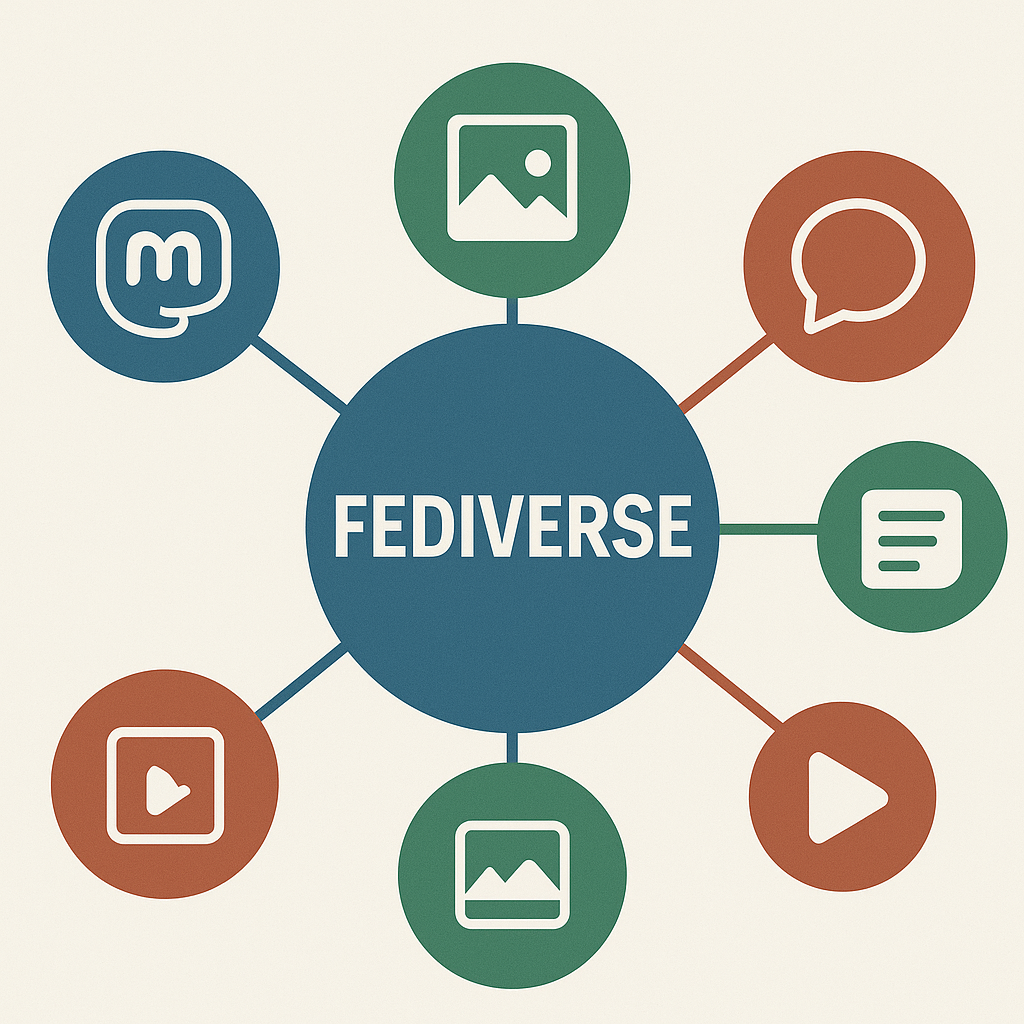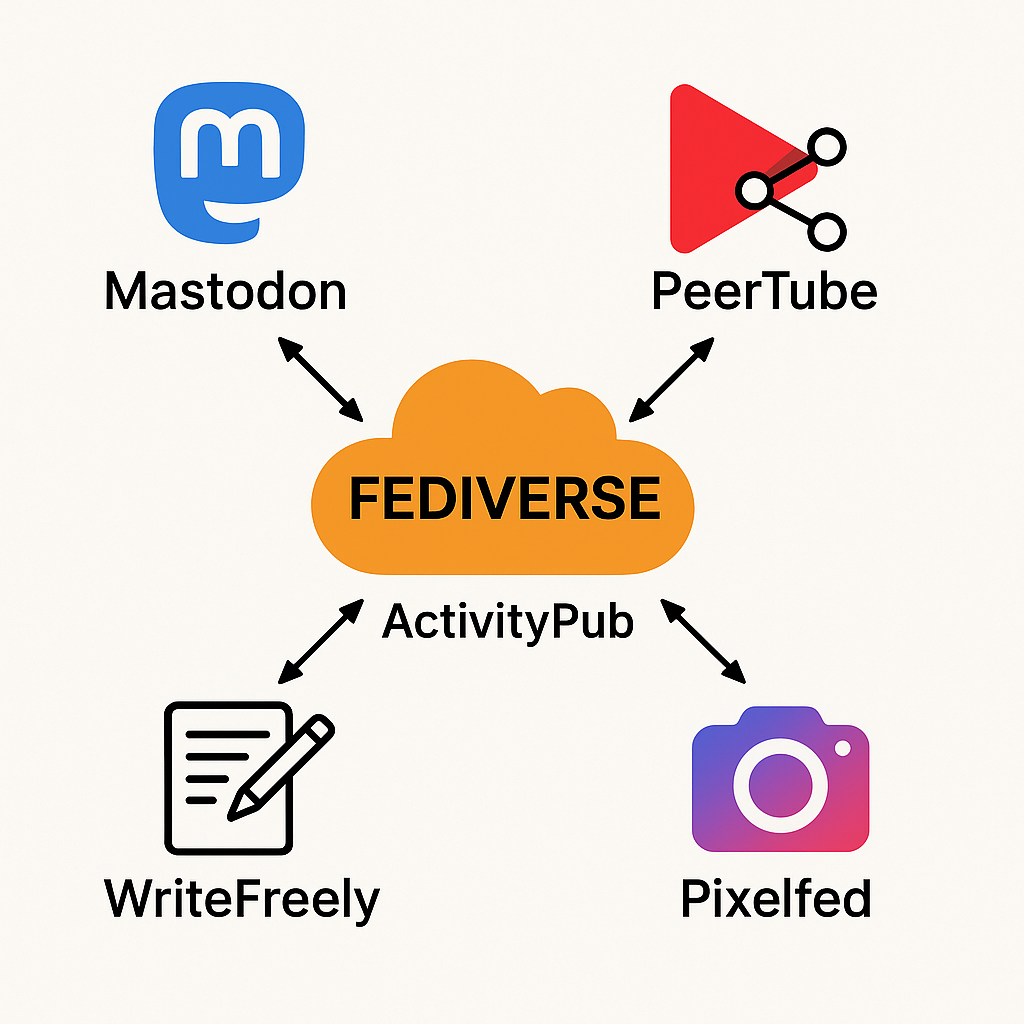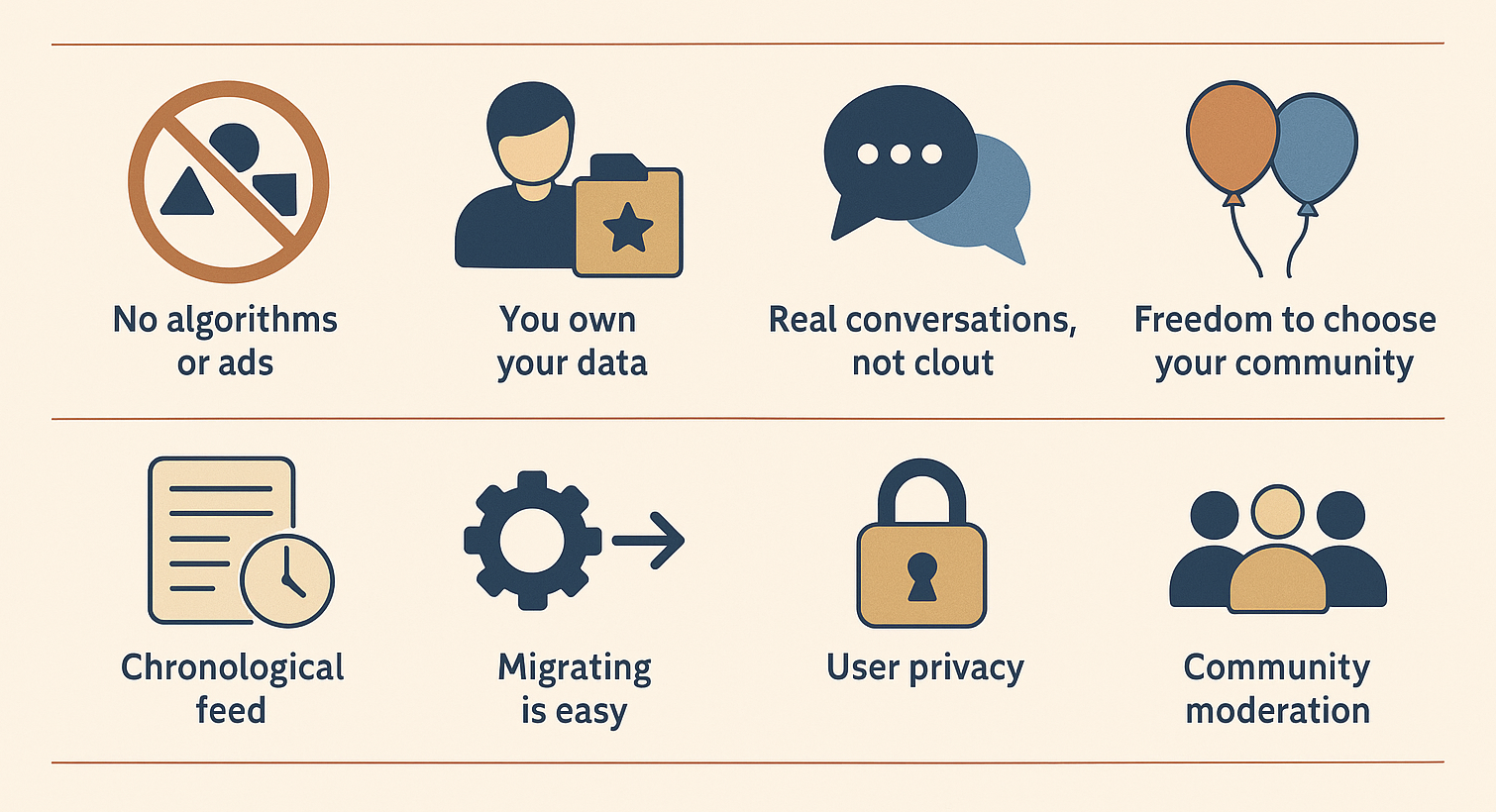The Turning Point
When Jamie, a freelance illustrator, got locked out of her Twitter account for no clear reason, she faced a harsh reality: her digital life wasn’t really hers. Her audience, content, and identity were controlled by a platform she didn’t own. That wake-up call led her to discover something radical, yet refreshingly old-school: the Fediverse.
What she found wasn’t a single app, but an entire decentralized network of platforms where fediverse users—not corporations—had control. That single frustrating moment launched her into a world that is slowly but surely reshaping how we think about the social network and social platforms.
What Is the Fediverse and How It Works

The Fediverse—short for "federated universe"—is a collection of decentralized protocols, interoperable social media platforms that communicate using the ActivityPub protocol. Instead of one big company running the show, it’s a network of independently run servers (called instances) that talk to each other.
Imagine if Twitter, Instagram, YouTube, and Medium could all work together, but none of them were owned by a corporation. That’s the Fediverse in action. Each platform offers its own style and features, but thanks to shared communication protocols, they function as one larger social ecosystem.
These platforms don’t rely on algorithms to decide what you see. They don’t track your every move or sell your attention. It’s a new (and yet old) way to experience the internet—closer to how the web started: open, diverse, and user-controlled. It's a model that prioritizes user agency over ad revenue.
Unlike closed platforms where user privacy is often compromised in favor of advertiser interests, the Fediverse puts transparency first. The code-bases are open-source, the governance is community-driven, and users have direct influence on moderation policies and platform development.
Top Fediverse Platforms Compared to Big Tech
| Fediverse Platform | Purpose | Mainstream Alternative | Network Type | Comparable Network Type |
| Mastodon | Microblogging platform, short posts, social media platform | Twitter/X | Federated Platform | Centralized Platform |
| PixelFed | Photo sharing platform, social photography | Federated Platform | Centralized Platform | |
| PeerTube | Video hosting and streaming | YouTube | Federated Platform + P2P | Centralized Platform |
| WriteFreely, WordPress | Blogging, long-form writing | Medium, Substack | Federated Platform | Centralized Platform |

Each of these platforms is independently run but fully interconnected. A fediverse user on Mastodon can follow a photographer on Pixelfed or read a blogger on WriteFreely without creating new accounts. This cross-platform interaction is seamless and core to the Fediverse’s identity.
Mastodon is perhaps the most well-known, offering an ad-free Twitter-like experience. Pixelfed is built for visual content lovers, enabling photographers to share their work without algorithmic interference. PeerTube supports video hosting without the need for centralized content moderation, and WriteFreely caters to writers who want a distraction-free publishing space.
Why Are People Switching to Decentralized Internet?
1. No Algorithms or Ads
Social media has become synonymous with manipulation. Most users don’t see what they want—they see what algorithms think will keep them engaged. The Fediverse flips that model. Posts appear in chronological order. No promoted tweets. No sponsored posts. No surveillance-driven feeds.
2. You Own Your Data
You don’t just sign up for an app; you choose a community. And if that community no longer fits your needs, you can migrate—keeping your followers and content in many cases. Some users even self-host their own fediverse servers, creating fully private digital spaces.
3. Real Life Conversations, Not Clout
Engagement on the Fediverse isn’t driven by numbers. There are fewer influencers, fewer bots, and more genuine dialogue. Content warnings (CW), rich moderation tools, and smaller community sizes often result in more respectful exchanges.
4. Freedom to Choose Your Community
Each instance has its own rules, themes, and user culture. You’re not bound to the whims of a single algorithm or company policy. From academic circles to punk art collectives, there’s space for everyone.
5. Community-Centric Development
One often overlooked advantage of the Fediverse is how development decisions are made. These platforms are built and maintained by open-source communities, not product managers focused on ad revenue. Feedback loops are shorter, and user input can shape the future of the software. It's a bottom-up approach that empowers users rather than exploiting them.
6. Better Mental Health Outcomes
The Fediverse's slower, more intentional pace also contributes to a healthier online experience. Without the addictive loops engineered by traditional platforms, users tend to spend less time doomscrolling and more time engaging meaningfully. Communities built on mutual respect help reduce burnout and online toxicity.
7. Ethical Tech for a Better Future
In a time when tech giants are under scrutiny for their role in spreading misinformation, harming privacy, and fueling division, the Fediverse stands apart by design. Platforms are often built with ethical foundations—respect for autonomy, transparent governance, and commitment to open-source ideals. For many, participating in the Fediverse isn’t just about finding a better app—it’s about aligning with a vision of the web rooted in digital rights and collective well-being.
8. Growing Ecosystem and User Base
The Fediverse is no longer niche. It has grown steadily, especially during tech disruptions like Twitter's policy changes or Reddit blackouts. As journalists, developers, educators, and artists migrate to these social media networks, they bring new energy and ideas. The community is expanding, and tools are evolving to become more user-friendly, making it easier than ever for newcomers to join.

Fediverse vs Big Tech: A Feature Comparison
Big Tech platforms profit from your time and attention. Their algorithms are designed to maximize engagement, often at the cost of mental health, privacy, and civil discourse. The Fediverse prioritizes authenticity and user control.
This shift toward user empowerment also cultivates greater transparency. In the Fediverse, platform rules, moderation decisions, and development road-maps are often open to public scrutiny and contribution. This community-led structure fosters digital trust and minimizes the black-box decision-making so common in mainstream platforms. It’s not just about where your data lives—it’s about who gets to decide what happens to it.
| Feature | Fediverse | Big Tech Platforms |
| Ownership | Decentralized Internet | Corporate |
| Data Control | User-controlled | Company-controlled |
| Ads | None or rare | Ubiquitous |
| Moderation | Community-based | Top-down, automated |
| Portability | Easy (migrate) | Hard (start over) |
| Algorithm Use | Minimal | Aggressive |
| Interoperability | High (cross-platform) | Low (walled gardens) |
| Development Model | Open-source, user-driven | Corporate-controlled |
The Fediverse Movement:
Reclaiming the Decentralized Internet
The appeal of the Fediverse isn’t just technical—it’s cultural. It’s a return to the idea that the internet can be a place of genuine connection and creativity. The Fediverse is made up of communities that moderate themselves, reject advertising as a business model, and care deeply about privacy, accessibility, and inclusion.
Jamie’s journey through the Fediverse mirrored a wider shift happening online. She found creators who weren’t chasing clout. She participated in communities that cared more about ideas than reach. She stopped worrying about being shadow-banned or algorithmically hidden. She just... posted.
And in return, she got real life engagement, thoughtful feedback, and a sense of online identity that wasn’t tied to a blue check-mark or trending topic. The Fediverse gave her what corporate social media had slowly taken away: trust, transparency, and community.
For Jamie, it wasn’t just a better social network—it was a better digital life.
Conclusion: Why You Should Explore the Fediverse
The Fediverse isn’t just an alternative—it’s an upgrade for people who care about how the internet should work. It’s still growing. It’s still evolving. But it’s already proven that there’s a better way to connect online.
Whether you're an artist, a writer, an organizer, or just tired of corporate control, the Fediverse offers a path forward. You won’t find viral fame overnight. But you will find a network that respects your agency, your voice, and your right to exist online without being sold.
Start small. Pick a platform. Choose a server. Say hello. The Fediverse is waiting.
